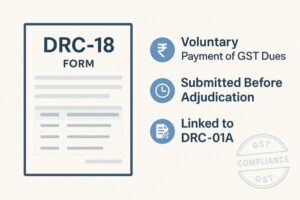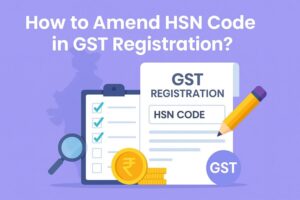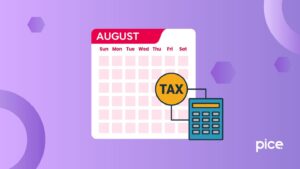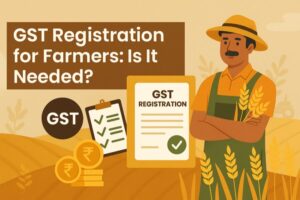GSTR 4 Late Fees, Due Date & Eligibility
- 29 Jan 25
- 10 mins

GSTR 4 Late Fees, Due Date & Eligibility
Key Takeaways
- GSTR-4 is an annual return for businesses under the GST composition scheme.
- The GSTR-4 filing deadline is now 30th June from FY 2024-25.
- Late filing incurs a fee of ₹50 per day (₹20 for nil returns), up to ₹2,000 or ₹500.
- CMP-08 must be filed quarterly before GSTR-4.
- Missing three consecutive GSTR-4 filings can lead to GST registration cancellation.
The GST authorities introduced separate forms for different types of taxpayers to file their monthly, quarterly, and annual returns. The law mandates the imposition of late fees, penalties, and interest on the due tax amount if taxpayers fail to file returns within the due date.
GSTR-4 late fees apply when composition scheme taxpayers comprising small businesses fail to file GSTR-4 annual return within the due date. Learn about the applicable GSTR 4 late fees, due date and eligibility to file GSTR-4 under GST norms.
What Is GSTR-4 Annual Return?
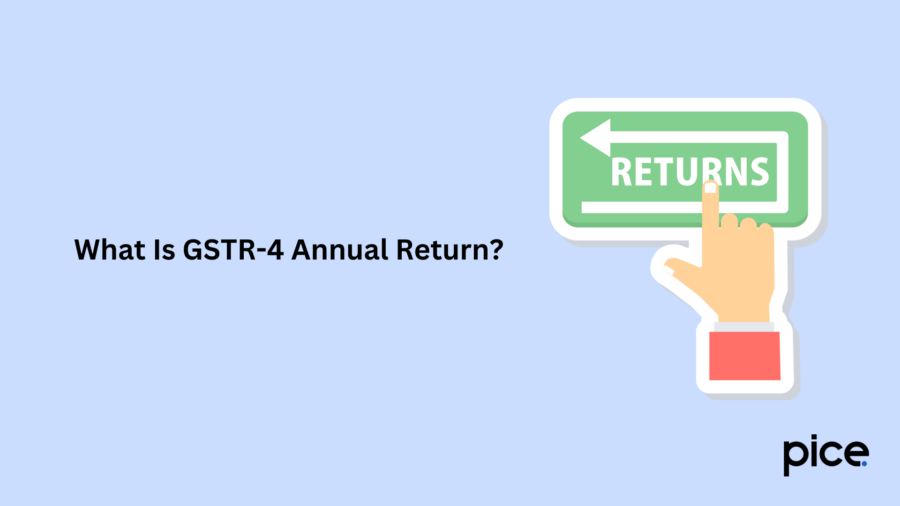
Businesses registered in GST under the composition scheme have to file annual returns in GSTR-4. While regular taxpayers file monthly or quarterly returns, composition scheme taxpayers have to file GSTR-4 once a year.
Form GSTR-4 includes details like inward and outward supplies, aggregate turnover, taxes paid, and other information for a specific financial year. The purpose of using this form is to make compliance with GST laws seamless for small businesses. Notably, composition scheme taxpayers pay a fixed tax on their annual turnover and cannot claim input tax credit (ITC).
GSTR-4 Due Date
The due date for filing the GSTR-4 return earlier was the 30th of April after the end of the relevant financial year. In other words, the due date for GSTR-4 for FY 2023-24 was 30th April 2024.
However, in the 53rd GST Council meeting, it was proposed that starting from FY 2024-25, the deadline for filing GSTR-4 would be extended from 30th April to 30th June of the following financial year.
As a taxpayer, you can file the yearly return form GSTR-4 when you file CMP-08 for all four quarters.
GSTR-4 Late Fees and Penalty
Non-filing of GSTR-4 beyond the due date attracts a late fee of ₹50 per day, which includes ₹25 under CGST (Central Goods and Services Tax) and ₹25 under SGST (State Goods and Services Tax), with a maximum restriction of₹ 2,000.
In case the taxpayer is liable for nil return filing, the late fee applicable is ₹20 per day, including ₹10 each under CGST and SGST, up to a maximum amount of ₹500.
In addition, the tax authorities might impose a penalty of 10% of the tax amount, with a minimum amount payable being ₹1,000, for late filing of GSTR-4. If a taxpayer does not file returns for consecutive 3 tax periods, the registration might be cancelled.
In case the aggregate annual turnover of a taxpayer under the composite scheme crosses ₹1.5 crore, he/she has to switch to the regular scheme and file returns. Despite changes in annual turnover, if a taxpayer continues to pay taxes under the composition scheme, he/she will be liable to pay a penalty determined under the provisions of Sections 73 and 74.
The tax authorities might levy an additional interest on the unpaid tax. This interest rate is usually 18% per annum on the unpaid amount of tax.
Eligibility Criteria for GST's Composition Scheme
Under the composition scheme, the GST rate ranges between 1% and 6% which is relatively lower than other GST rates. Here are the eligibility criteria for the GST composition scheme:
● The annual business turnover should not exceed ₹1 crore for all Indian states except Himachal Pradesh and North-Eastern states. For these two regions, the annual turnover of a business should be below ₹75 lakh to be eligible for the composite scheme.
● Entities need to consider all the registered businesses under the same PAN for eligibility for this scheme.
● Notice boards at the business address and bill of supply that the business issues should mention ‘composition taxable person’.
● As a supplier of goods, you can render services only up to ₹5 lakh.
● If you are a business dealing with an intra-state supply of goods, you are eligible for the GST composition scheme.
● As a taxpayer, you cannot claim input tax credit (ITC) or collect composition tax.
However, the following entities are not eligible for the GST composition scheme:
● Service providers
● Suppliers excluding those related to restaurant businesses
● A regular taxpayer or non-resident taxable person
● Supplier of goods using e-commerce operator, pan masala and tobacco manufacturers, including ice-cream manufacturers
● GST-exempted goods supplier
● Non-taxable goods supplier
● Inter-state goods supplier
What Is the GSTR 4 Format?
The GST 4 format includes 9 tables as follows:
Table 1 to 3: Basic Information
This table is auto-populated from GSTR-1 with the following details about the taxpayer:
● GSTIN of the taxpayer
● Name of the taxpayer
● Application Reference Number (ARN)
● Previous financial year’s aggregate turnover
● ARN date
Table 4: Inward Supplies
Here are the four parts of this table:
● 4A: This part includes records of supplies that the taxpayer receives from registered suppliers, however not under the reverse charge mechanism. It includes both intrastate and interstate transactions.
● 4B: It includes details of supplies that the business receives from registered suppliers under the reverse charge mechanism.
● 4C: This part includes interstate and intrastate supplies received from unregistered suppliers.
● 4D: It includes taxable import services under the reverse charge mechanism.
Table 5: Summary of Liability
This table summarises the taxpayer's liability in accordance with Form GST CMP-08 based on self-assessment. It includes taxes on inward supplies under reverse charge, outward supplies, and the total tax amount, including the interest paid.
Tabe 6: Outward Supplies
The details of outward supplies under reverse charge as follows are available in this table:
● Tax rate
● Amount of IGST or CGST and SGST in addition to cess
Table 7: TDS/TCS Details
Here are the details available on this table:
● Deductor or operator’s GSTIN
● TDS or TCS amount
● Gross invoice value
Table 8: Tax, Late Fee and Interest
Here are the details found in this table:
● The payable tax amount which is auto-populated from Table 6
● Balance tax payable
● Tax amount paid based on CMP-08
● Interest paid and payable for late filing of GST returns
● Late fee payable or paid for late GST payment
Table 9: Refund Claims
This table allows the breaking down of refunds into various categories like tax, penalty, interest, fee and others. It further enables taxpayers to claim a refund of excess taxes paid.
Who Needs to File GSTR-4?
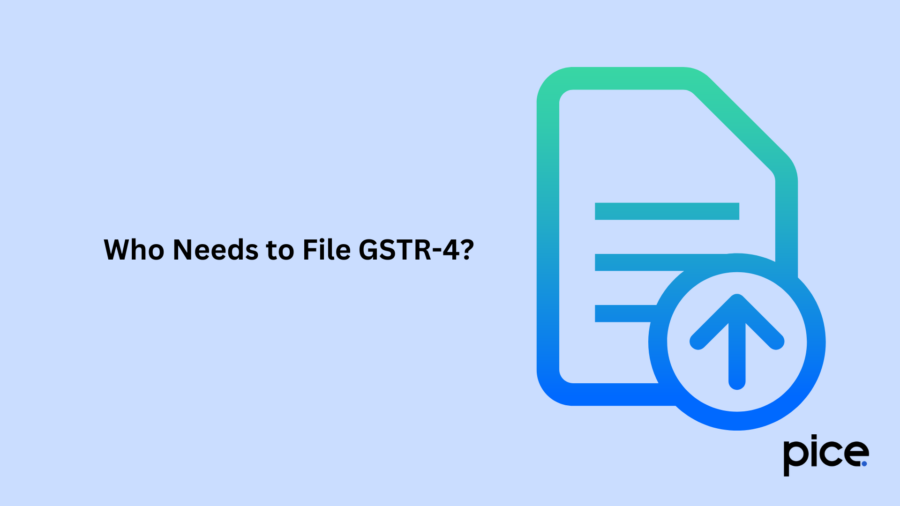
The following taxpayers under the composition scheme have to file GSTR-4:
● Taxpayers who are registered under the composition since the beginning and never opted out.
● Taxpayers opting for the composition scheme prior to the financial year beginning.
● Taxpayers who were registered under the composition scheme however opted out during a specific year.
How to File GSTR-4?
You can file GSTR-4 online on the unified GST portal by following the steps below:
Step 1: Login
Log in to the official GST portal and on the 'Services' tab, select 'Returns' and then 'Annual Return'. Alternatively, you can choose the 'Annual Return' tab on the GST dashboard.
Step 2: Select Financial Year
Select ‘File Annual Returns’ and choose the financial year for which you want to file GSTR-4.
Step 3: Prepare Online
Select the ‘Prepare Online’ option on the Annual Return GSTR-4 tile and read the instructions.
Step 4: Enter Aggregate Turnover
Enter the previous year’s annual turnover value. If there was no aggregate annual turnover in the previous year, enter 0; however, do not keep the field blank.
Step 5: File Nil GSTR-4 (If Applicable)
If you are filing a nil return, make sure to select the checkbox ‘File Nil GSTR-4’ to go to the final step directly.
Step 6: Fill in the Tables
Fill in the tables as applicable entering the details pertaining to inward and outward supplies and additional details.
Step 7: Preview
Click on ‘Proceed to File’ and preview it to ensure all the details entered are correct.
Step 8: Make Payment
Any tax, interest or late fee due must be paid prior to filing. The payment can be made through the electronic cash ledger.
Step 9: Submit DSC/EVC
To complete the process, use a DSC (Digital Signature Certificate) or EVC (Electronic Verification Code).
Difference Between Form GSTR-4 and Form GSTR-4A
Here are the prominent differences between Form GSTR-4 and Form GSTR-4A:
| Parameter | Form GSTR-4 | Form GSTR-4A |
| Filing Requirement | All taxpayers under the composition scheme have to file form GSTR-4 | No requirement for filing |
| Filing Frequency | Annual | Not applicable |
| Purpose | It summarises details pertaining to outward supplies, ITC reversed, tax paid and others. | It elaborates on details of inward supplies. |
| Content | It includes turnover, invoices, tax aid and others. | It includes details of purchases from registered suppliers. |
| Corrections | You can make corrections in the following financial year’s return. | To rectify the details, you need to inform the supplier at the right time. |
| Due Date | 30th of June after the financial year-end | Not applicable |
Things to Know While Filing GSTR-4 Online
It's essential to know the following aspects pertaining to GSTR-4 filing:
● Delayed filing of GSTR-4 after the due date attracts a late fee which is ₹50 per day after the due date up to a maximum amount of ₹2,000 or ₹500 for nil return filing taxpayers.
● In case you fail to file CMP-08 for a quarter, you will not be able to file GSTR-4.
● You can file GSTR-4 using third-party software.
● Once filed on the GSTN Portal, GSTR-4 cannot be revised.
● Ensure you reconcile inward and outward supply details to align with business transactions and tax invoices.
● Classifying outward supplies under correct GST rates is essential for error-free reporting of purchases, sales, net advances, credit/debit notes and amendments.
● Maintaining proper supporting documents such as invoices, transaction records, and others is crucial.
Conclusion
Earlier the applicable GSTR-4 late fee was ₹200 per day, up to a maximum limit of ₹5,000. However, it has been revised in the financial year 2012-22 to reduce the compliance burden on small taxpayers and make the GST regulations taxpayer-friendly.
However, taxpayers can avoid paying late fees by filing GSTR-4 returns within the due date. In case you miss filing GSTR-4 within the due date, based on the revised regulations, you have to pay lower late fees up to ₹2,000 or ₹500 for nil return filing.
💡If you want to streamline your payment and make GST payments, consider using the PICE App. Explore the PICE App today and take your business to new heights.
 By
By 





